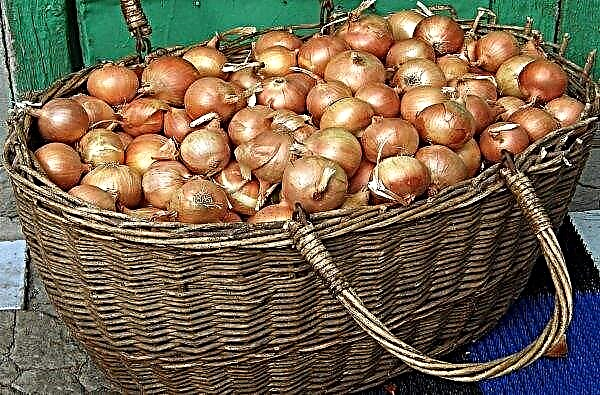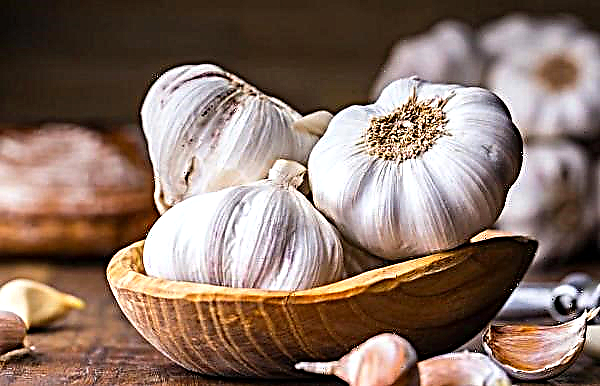One of the steps for the proper care of an apiary is the bee laying in the spring, which allows you to get a new bee family and, thus, replenish the hive population. Let's take a closer look at this process, as well as the advantages and disadvantages of layering methods.
Why do you need layering
Layers are a selection of bees and brood from the main families, which will actively breed in new hives due to the presence of excess brood and bees. To begin, consider the reasons why you should make layering.
Important! Fresh uterus, launched into the hive in spring, are much more likely to grow a healthy replacement than wintered ones.
These include:
- bees labor growth;
- prevention of uncontrolled swarming;
- the formation of a mature brood to the main bribe;
- increase in the volume of honey collected;
- saving on buying new families.

When to make layering
This process is best carried out in the spring season, since the future long warm period will allow the new family to adapt well, grow stronger and stock up on flower nectar. Thus, she will have time to prepare well for the winter and will be able to successfully transfer it. Early and late spring beekeeping is possible. Depending on the climate of the area, the first may occur in the middle or end of April, when the air warms up to a temperature of + 20 ° С.
Important! If the layers are formed using the “alien” acquired uterus, it is worth spending it at 5–10 days ahead of schedule.
Late, falling in the second half of May, is carried out when the family is strong enough and will acquire drones and a uterus. This layering is considered more complex, since the risk of non-return of bees from a familiarization or mating flight increases. And without a fetal uterus, you can be left without brood, which will lead to a decrease in the amount of honey collected.
Hive preparation
Before layering should be prepared:
- A new hive with proper ventilation (you can use a multi-case model).
- Nucleus - a small hive with 4 frames (2 for brood, 2 for food storage).
- Mature mother liquor (wax cells for hatching), taken from healthy insects.
- Winter insulation in the form of polystyrene foam or a pillow of moss, tow, reeds.
- A swarm for carrying bees from one place to another.
- Healthy fetal uterus.
 The formation of layering can be carried out not only with adult insects, but also with young ones who did not fly for a bribe. For the formation of a new family, a uterus can be taken from its apiary, as well as a third-party, acquired in another farm. It is most convenient to form layers of insects that have just begun swarming.
The formation of layering can be carried out not only with adult insects, but also with young ones who did not fly for a bribe. For the formation of a new family, a uterus can be taken from its apiary, as well as a third-party, acquired in another farm. It is most convenient to form layers of insects that have just begun swarming.In addition, an early flight of bees will reveal weak individuals and replace the uterus with healthier ones in time. Every spring, do not forget to audit the hives, clean, disinfect and update unusable frames.
Did you know? No wonder the bees are called big toilers, because for the production of only 100 g of honey they have to collect and process nectar from 1 million flowers.
The easiest ways to lay
There are different ways of bee laying. Let's look at a few of the simplest ones.
Without a uterus
This method is most often temporary and is aimed not at increasing the number of families, but at containing natural swarming. To do this, insects from an old family are planted in several frames in a new hive, and their uterus remains in its home. Later, families reunite.
If the formation of a lay without a uterus is carried out to expand the apiary, then it should:
- choose a strong brood family with 12-17 frames;
- establish two similar hives;
- after the bees fly away to collect honey, place a new nest near the old one and divide the frames, creating two identical hives;
- insects will separate, occupy both dwellings, forming two bee colonies;
- after 3–6 days from the hive without a uterus, it is necessary to remove bad queen cells and leave no more than 4 quality ones;
- after 24 days, when the uterus was withdrawn and the first sowing from it, you need to evaluate the result and, if it is unsatisfactory, then the whole family reunites and the second attempt to divide is carried out no earlier than a year later.
The advantage of the method is its simplicity for the usual beekeeping cycle, as well as its effectiveness as a method of combating swarming. The disadvantages include a low (30 percent) increase in bee productivity. In addition, in a family without a uterus for more than 2-3 weeks, drones appear and new replanting becomes impossible, therefore, it needs special attention and control.
Did you know? If the bees focused only on sight, we would not know the taste of honey, because they are not able to distinguish an object located further than 1.5 m. However, nature generously compensated for the strong short-sightedness of insects with a wonderful sense of smell.
Uterus
A raid on the queen cell or uterus is carried out in this way:
- choose strong families for division, bring harvested hives, frames, covers and insulation to them;
- in a new house they form a nest of 5–6 frames, where 6–10 kg of honey and sufficient cell areas for sowing should be located;
- if there is supportive honey collection, then 2-3 frames are replaced with wax;
- the uterus from the old hive with the brood frame is transferred to the center of the new nest, which is limited by the diaphragm.
The resulting beehive is placed in the place of the old one, which is rearranged away or pushed back 1–1.5 m and turned backward. It should be placed so that the location of the old hive was less recognizable. The division is carried out until the middle of the day, when the most active flight of bees occurs. After two days, most of the flying bees leave their mother’s home, they are given a high-quality mature mother, having removed their own fistulous ones in advance. At the same time, they are checking a new family and, with a shortage of 5-6 frames, adding new ones. The disadvantages of the method include a significant weakening of insects and a violation of the natural age composition of bees in both families. However, this method is used even in the case of laying swarm mother liquors, which is impossible with other methods of artificial swarming. At the same time, the swarm mood disappears, since all flying insects appear in the role of a new natural swarm.
At the same time, they are checking a new family and, with a shortage of 5-6 frames, adding new ones. The disadvantages of the method include a significant weakening of insects and a violation of the natural age composition of bees in both families. However, this method is used even in the case of laying swarm mother liquors, which is impossible with other methods of artificial swarming. At the same time, the swarm mood disappears, since all flying insects appear in the role of a new natural swarm.
Creating Early Layers
This method is also well established among experienced beekeepers. How to create an early layering:
- to take 1-2 brood frames from strong families and place them in a separate box, choosing frames with non-flying young individuals and leaving the uterus (at least 6 frames should be gathered in the box);
- install a new nest, warm the brood frames to + 30 ° C and place them in the center;
- on the one hand set a frame with honey, on the other - with water;
- to take for non-flying individuals from another 3 frames of the original family;
- close the new nest and wait until the flying insects leave the apiary, and then place the uterus in the layers;
- after about 3 weeks, the layers will be equal to the main family.
Video: Creating Layers
To obtain a high-quality lay, you need to take brood from a strong family weighing at least 2 kg. In this case, a family with 9 frames and giving offspring by 7, you can select 1 frame of an adult brood with bees. In general, the method of early layering can significantly increase the productivity of bees - by 50–70%, which is its undoubted advantage.
Features of the formation of layering in multihull hives
Unlike a single-hive hive, in a multi-hull house, its installation should be especially carefully monitored - the doors of the old and new families should be directed in different directions. The process of collecting a new family is carried out by traditional methods, but the family that occupies two buildings is considered strong. Honeycombs with bees, larvae and food are also selected from it. Another feature of insect discharge in multihull hives is that such dwellings are usually not insulated, because they have enough heat for heating coming from below. Regardless of the method chosen, spring beekeeping is a prerequisite for successful beekeeping. Its implementation allows you to control the natural swarming of insects, plan to increase the number of families and, as a result, the amount of honey collected.
Regardless of the method chosen, spring beekeeping is a prerequisite for successful beekeeping. Its implementation allows you to control the natural swarming of insects, plan to increase the number of families and, as a result, the amount of honey collected.












